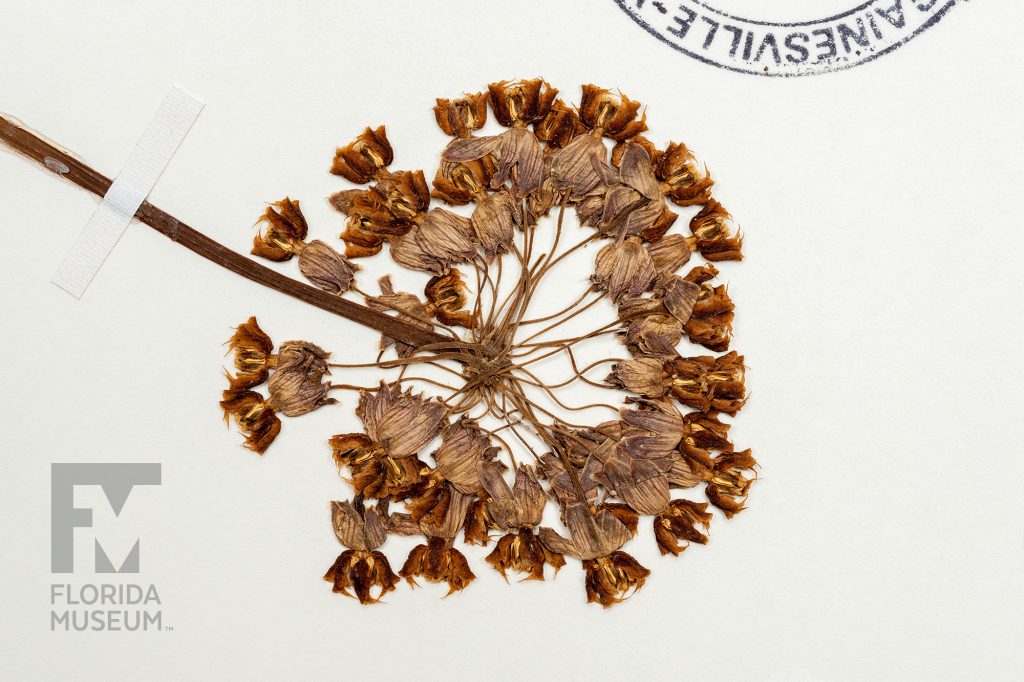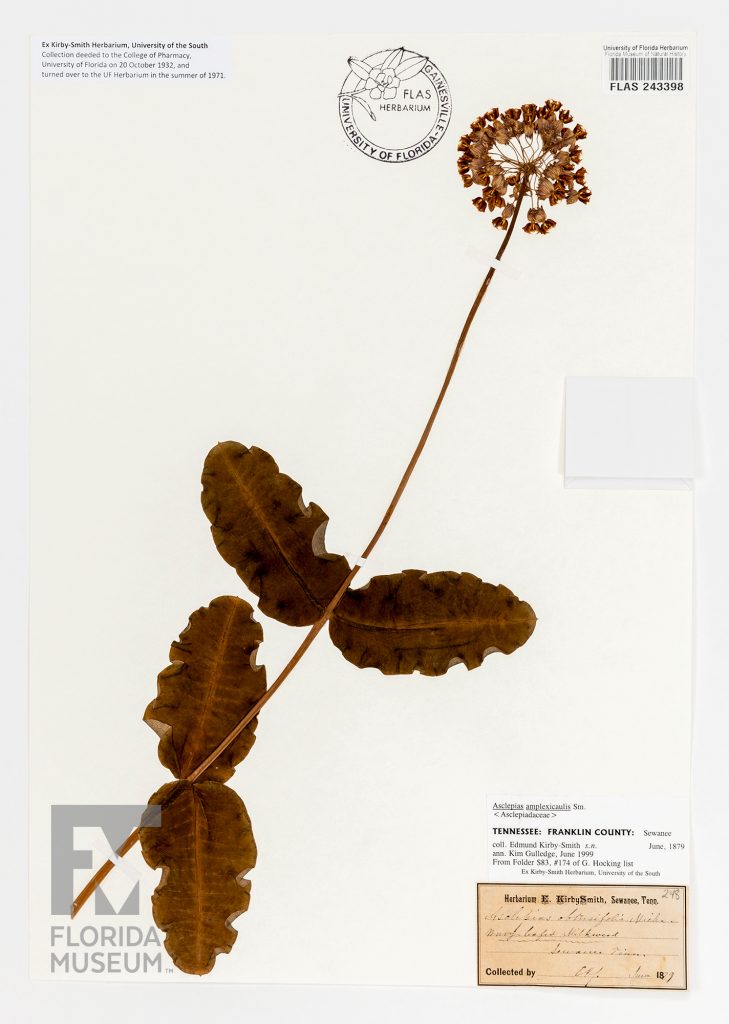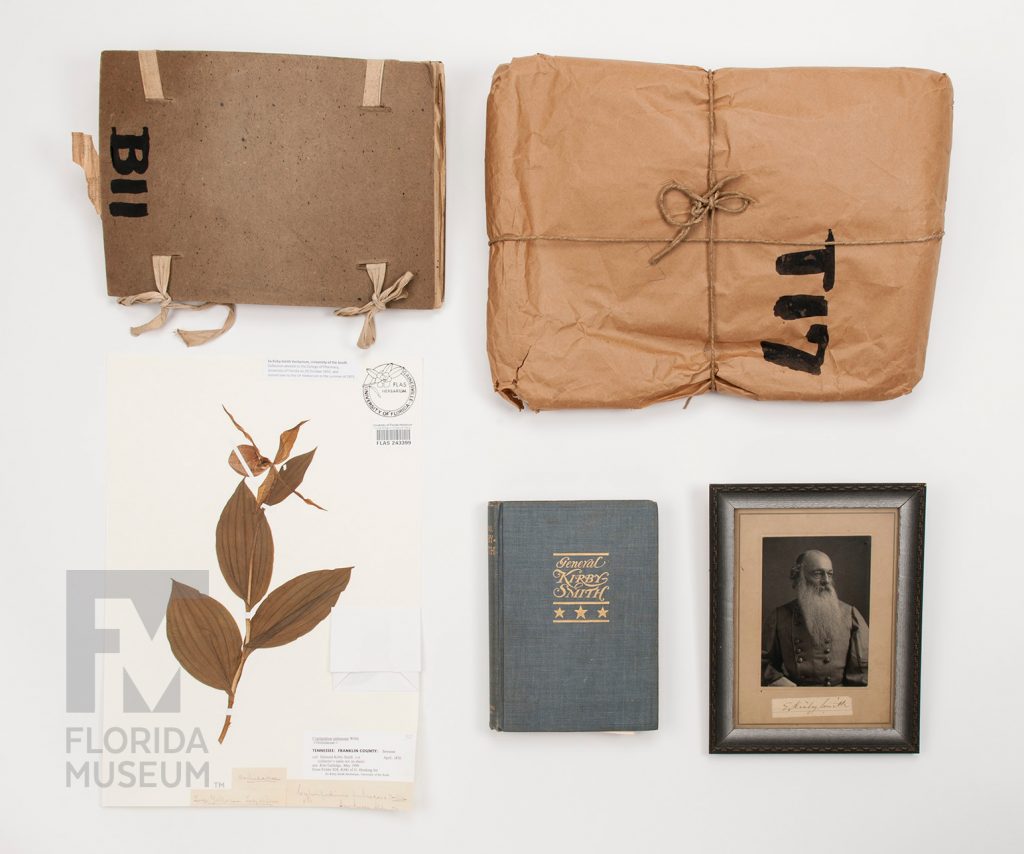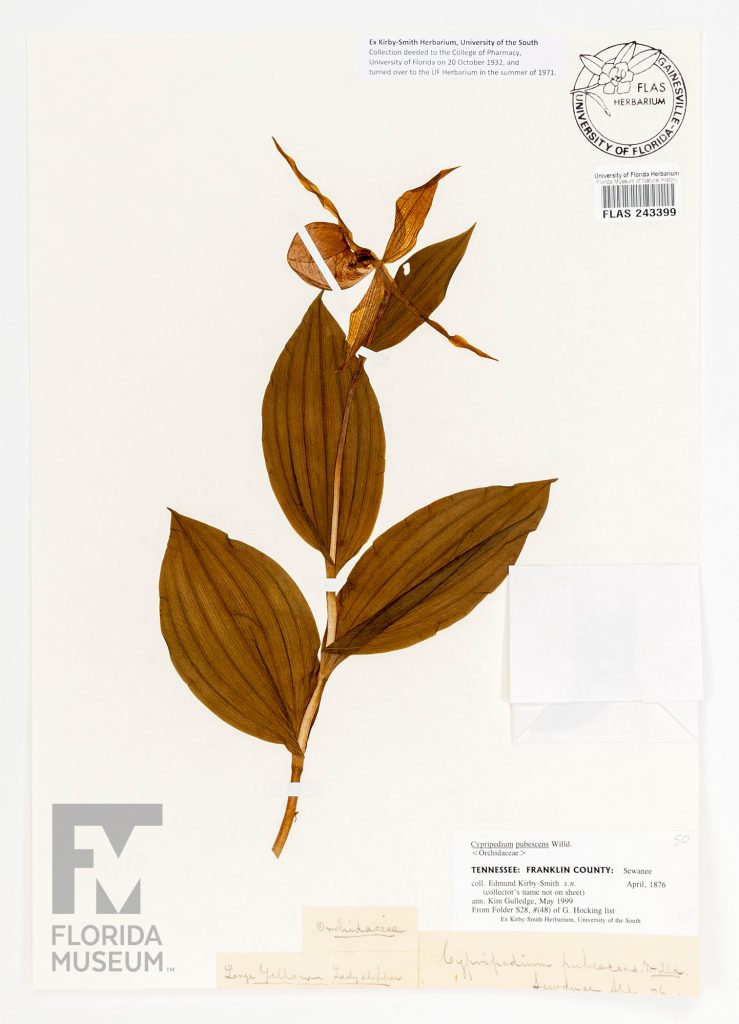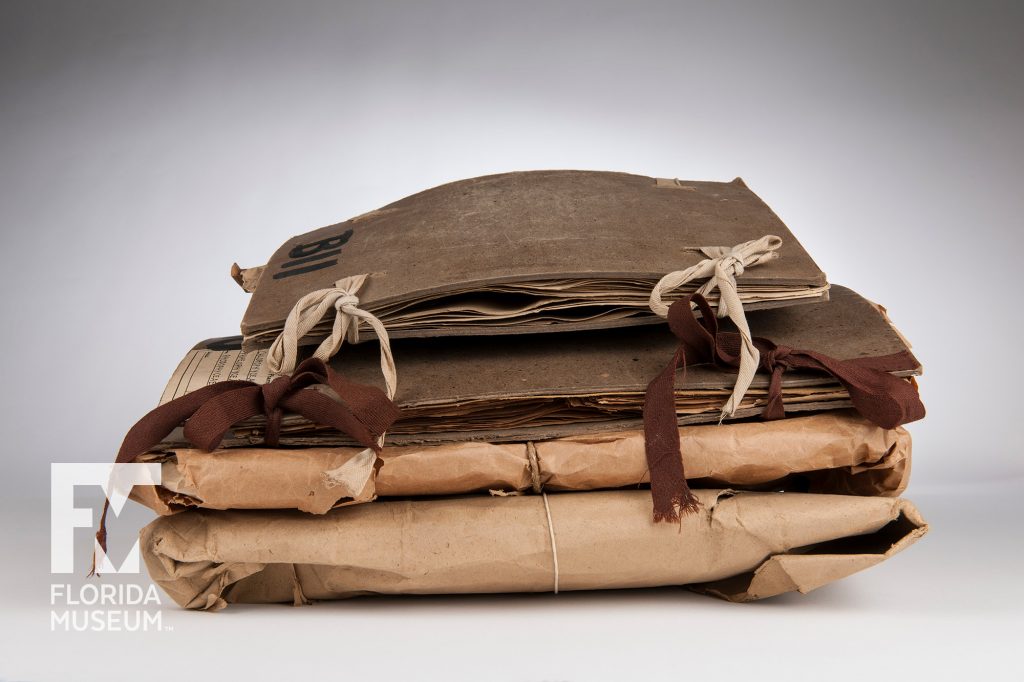Kirby Smith was a Confederate general, amateur botanist and academic. He collected plants wherever he was stationed during his long career. His plant collection, donated to the Museum, represents a snapshot of plant biodiversity during Kirby Smith’s time.
Summary
Clasping Milkweed (Asclepias amplexicaulis)
Large Yellow Lady’s Slipper (Cypripedium parviflorum var. pubescens)
Specimens from the General Edmund Kirby Smith Collection
Collection
Story
Our Herbarium has several thousand plant specimens collected by Edmund Kirby Smith, who was a Confederate Civil War general, and I only recently learned how we got them and why.
If you go to the Capitol in Washington there’s a National Statuary Hall and each state was allowed to select two people to be depicted by statues for each state. The two Floridian statues are one, John Gorey from Apalachicola, who invented refrigeration – and you can see why that’s important to the state – and the other is General Kirby Smith. There’s also the Alachua County school administration building here that is named after him.
Turns out he was born in 1824 in St. Augustine, so he is a Floridian, but his parents were from New England and he was sent to military boarding schools in Virginia and then to West Point and he became a military officer. He served in the Mexican-American war, in the Civil War, and then he served as a botanist on a survey of the U.S.-Mexico border.
So he was a full career military man but he was also an amateur botanist who collected plants wherever he was stationed. He was an academic and taught mathematics at West Point and eventually became president of the University of the South in Sewanee, Tennessee, so he was a real Renaissance man for the 1800s. He was one of a group of West Point graduates who were not just soldiers but they were also explorers and naturalists and scientists, at a time when the term “scientist” really didn’t exist.
He also had a great beard, somewhere between Charles Darwin and ZZ Top.
Our Herbarium has about 5,000 of his specimens. There are others at Harvard and the Smithsonian. Ours were donated by a private collector to the University of Florida College of Pharmacy and they were eventually transferred to the Museum. The plants are a valuable snapshot of what grew in the areas where he was living and stationed throughout his life.
I just found out that the Kirby Smith statue is soon to be removed from the Capitol and replaced by someone else who actually lived in Florida for most of their life and also was not a Confederate officer. In reading his biography and about his life it turns out that his relationship with the Confederacy and slavery was complex. His sister remained loyal to the Union and then married a Confederate, so Thanksgiving dinners were probably awkward for years.
The most interesting thing is that he had a slave named Alexander Darnes that he acquired at the age of 15. Darnes accompanied Smith on all of his travels out West and during the Civil War, and after emancipation Kirby Smith and his sister saw to it that Darnes was educated at Lincoln University and then went on to medical school at Howard University. Darnes became the first Black physician in Jacksonville and was a pillar of the medical community there during smallpox and yellow fever epidemics. In 2003, Maria Juliana Kirby-Smith, who is a great-granddaughter of the general, created a sculpture called “Sons of St. Augustine” that is a life-size bronze sculpture of Kirby Smith and Darnes together. It’s installed in the courtyard of the Kirby Smith house in St. Augustine, and it’s the first public statue erected in St. Augustine to honor a Black man.
The Kirby Smith specimens are not exceedingly interesting but they are record of where he was – it’s a record of plants in time and space. It kinda reminds me that for even many of us museum people that the specimens that we collect and leave in the Museum will ultimately be much more important than the publications or the books or research that we do.
Mark Whitten
Senior biologist, University of Florida Herbarium*
Florida Museum of Natural History
Exhibit
On display Sept. 23, 2017-Jan. 7, 2018, Rare, Beautiful & Fascinating: 100 Years @FloridaMuseum celebrated the Museum’s rich history. Each Museum collection was asked to contribute its most interesting items and share the stories that make them special. Though the physical exhibit is closed, this companion website remains online, providing an opportunity to experience the Florida Museum’s most treasured specimens.
Exhibit Area: 100 Years of History
Theme: Historical Collections
 Want to see more? Explore more than 300 breathtaking color photos of plants, animals, fossils and cultural heritage materials from the Florida Museum of Natural History’s collections in the award-winning book All Things Beautiful available from the University Press of Florida.
Want to see more? Explore more than 300 breathtaking color photos of plants, animals, fossils and cultural heritage materials from the Florida Museum of Natural History’s collections in the award-winning book All Things Beautiful available from the University Press of Florida.
*This title was accurate at the time the exhibit was on display in 2017. Please visit the collection website to verify current staff and student information.
